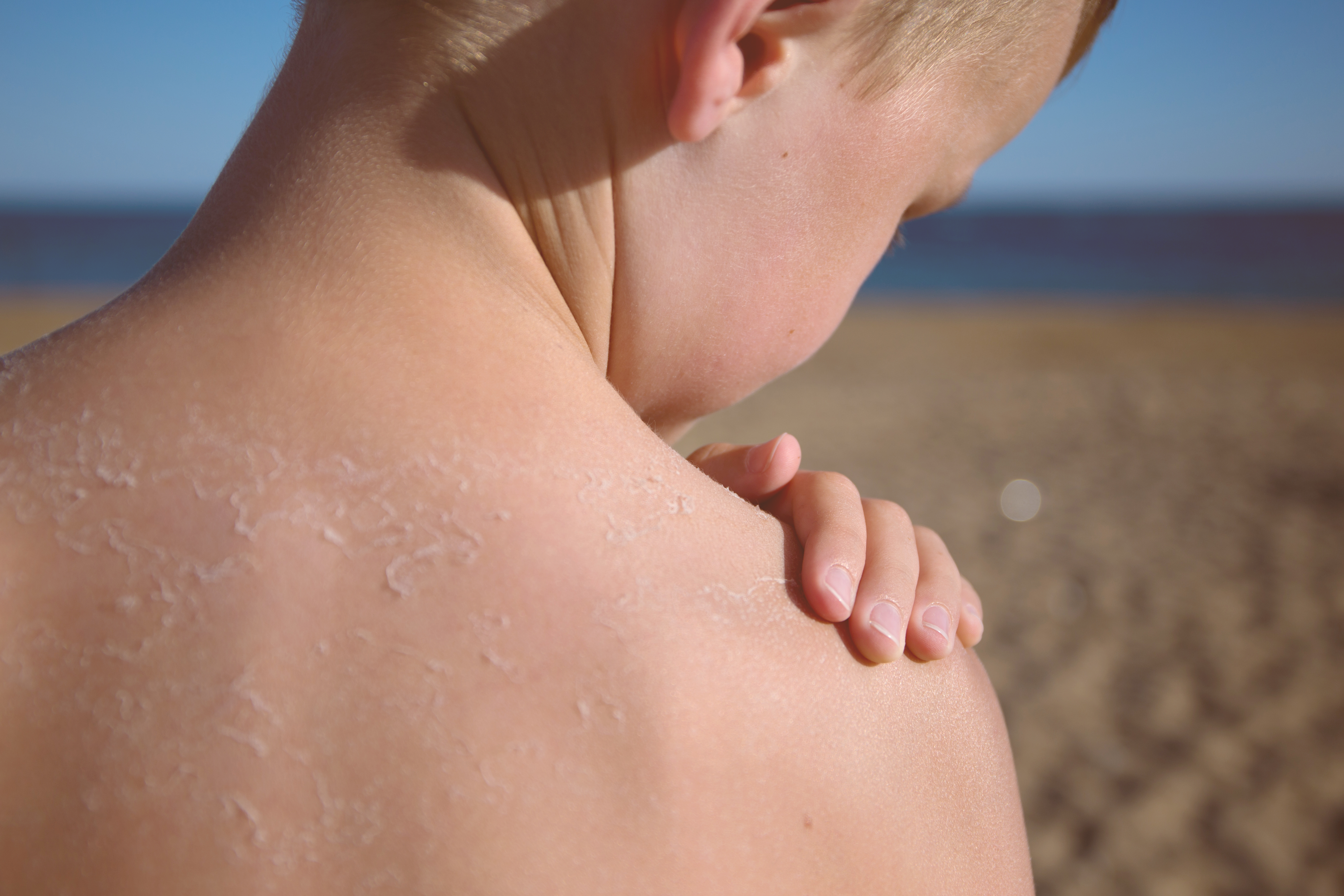A sunburn is skin damage from the sun’s ultraviolet (UV) rays. Most sunburns are first-degree burns that cause mild pain and redness because it only affects the outer layer of skin. It might hurt when you touch it but it can usually be treated at home.
Second-degree burn has deep skin layer and nerve endings involved. It is red, painful, swells up and has blisters. This type of sunburn is usually more painful and takes longer to heal.
Other problems that can be present along with sunburn include:
- Heatstroke or other heat-related illnesses from too much sun exposure.
- Allergic reactions to sun exposure, sunscreen products, or medicines.
- Vision problems, such as burning pain, decreased vision, or partial or complete vision loss.
Long-term problems include:
- An increased chance of having skin cancer.
- An increase in the number of cold sores.
- An increase in problems related to a health condition, such as lupus.
- Cataracts, from not protecting your eyes from direct or indirect sunlight over many years. Cataracts are one of the leading causes of blindness.
- Skin changes, such as premature wrinkling or brown spots.
People with fair or freckled skin, blond or red hair, and blue eyes usually sunburn easily. People with darker skin they can still get skin cancer. So it’s important to use sun protection, no matter what your skin color is.
Your age also affects how your skin reacts to the sun. The skin of children younger than 6 and adults older than 60 is more sensitive to sunlight.
You may get a more severe sunburn depending on:
- The time of day. You are more likely to get a sunburn between 10 in the morning and 4 in the afternoon, when the sun’s rays are the strongest. You might think the chance of getting a sunburn on cloudy days is less, but the sun’s damaging UV light can pass through clouds.
- Whether you are near reflective surfaces, such as water, white sand, concrete, snow, and ice. All of these reflect the sun’s rays and can cause sunburns.
- The season of the year. The position of the sun on summer days can cause a more severe sunburn.
- It is easy to get sunburned at higher altitudes, because there is less of the earth’s atmosphere to block the sunlight. UV exposure increases about 4% for every 1000 ft (305 m) gain in elevation.
- How close you are to the equator (latitude). The closer you are to the equator, the more direct sunlight passes through the atmosphere. For example, the southern United States gets 1.5 times more sunlight than the northern United States.
- The UV index of the day, which shows the risk of getting a sunburn that day.


